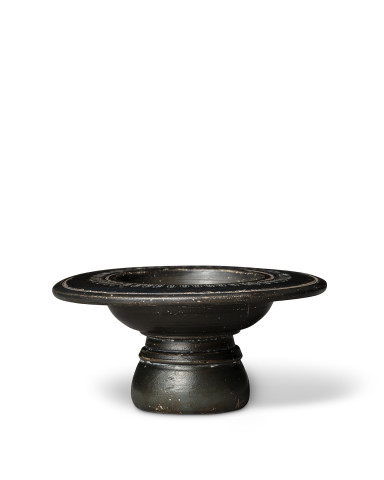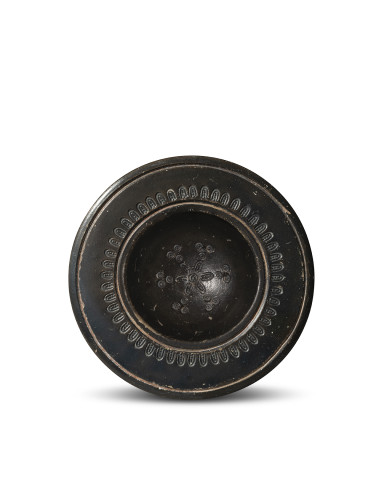Greek black-glaze stemmed bowl, South Italy, Campania, Teano Ware, second half of 4th–early 3rd century BC
Terracotta
Height: 4.3cm, diameter: 8.8cm
10884
Further images
This stemmed bowl (also sometimes known as a salt) is covered in a black-brown slip and decorated with stamped and incised motifs originally filled with red, remnants of which remain....
This stemmed bowl (also sometimes known as a salt) is covered in a black-brown slip and decorated with stamped and incised motifs originally filled with red, remnants of which remain. The interior is decorated with a six-pointed star of stamped circle and oval motifs. An incised line at the inner and outer edge of the horizontal rim, with stamped tongues encircling the former. The moulded, conical foot is hollow, the underside reserved. Intact with some very minor chipping, incrustation to the inside of the foot.
The stemmed dish found its greatest popularity between the late sixth century BC and the second quarter of the fifth. It is thought that the group of smaller stemmed dishes held salts and condiments, whilst the larger ones held nuts, fruit and olives.
The stemmed dish found its greatest popularity between the late sixth century BC and the second quarter of the fifth. It is thought that the group of smaller stemmed dishes held salts and condiments, whilst the larger ones held nuts, fruit and olives.





